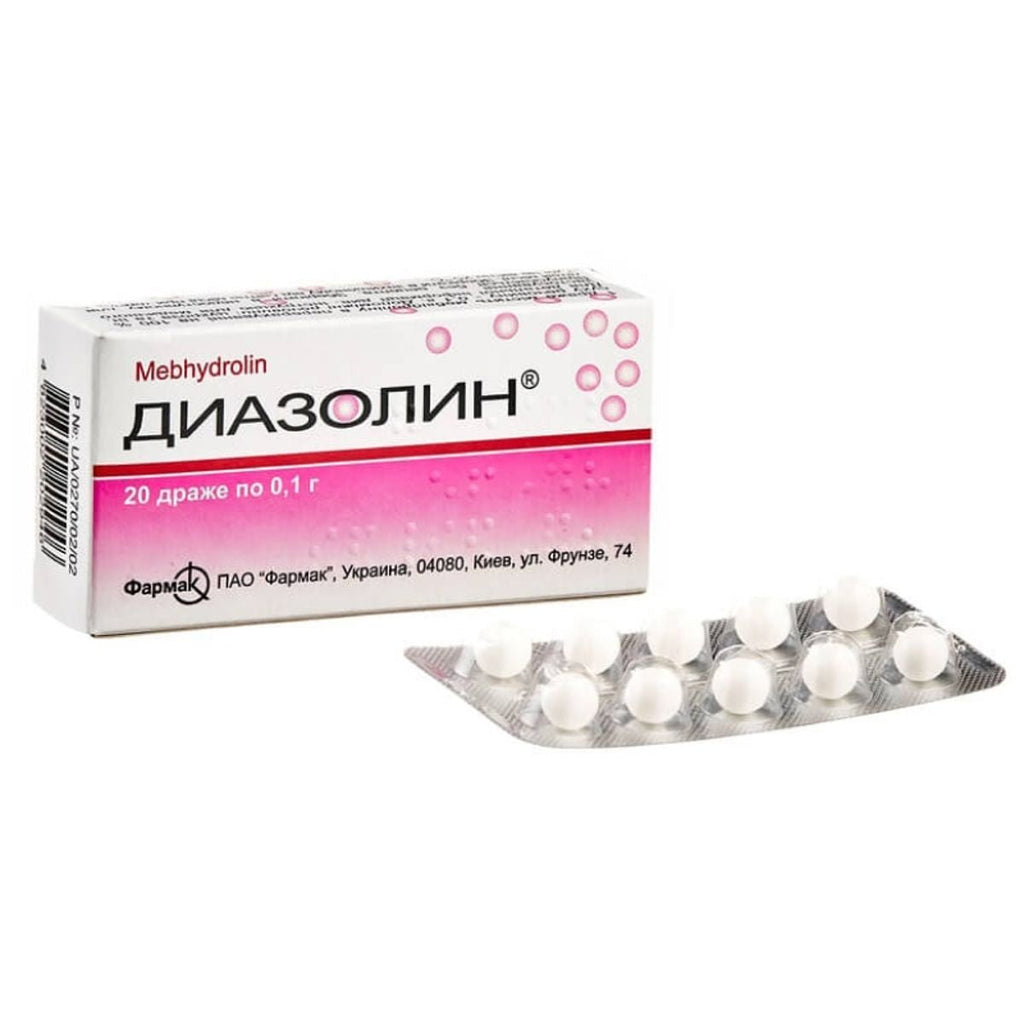Allergic reactions can appear in many forms — from seasonal rhinitis and sneezing to hives or swelling after food intake. In such cases, antihistamines provide quick symptom relief. One of the most popular and affordable options is Diazolin.
What Symptoms Does Diazolin Treat?
This medication has been used for decades. Its active ingredient, mebhydrolin, blocks H1 histamine receptors, helping reduce common allergy symptoms such as itching, rash, swelling, watery eyes, and sneezing. A major benefit of Diazolin is that, unlike many first-generation antihistamines, it causes minimal drowsiness.
If you’re wondering what Diazolin is for, it’s commonly prescribed for:
- allergic rhinitis and hay fever;
- skin rashes, dermatitis, and urticaria;
- food and medication-related allergic reactions;
- allergic conjunctivitis;
- insect bites that trigger intense skin irritation.
How to Take Diazolin Safely and Effectively
According to the instructions, Diazolin tablets should be taken orally after meals, without chewing.
For adults and children over 12 years, the standard dosage is one 100 mg tablet once or twice daily. For children aged 3 to 12, the dosage is lower — typically 50 mg taken 1 to 3 times per day, depending on age and body weight. The duration of treatment is determined by a healthcare provider, usually 3–5 days for acute symptoms, or longer in chronic conditions.
Keep in mind: Diazolin does not work instantly. Its effects begin 15–30 minutes after ingestion, peak in 1–2 hours, and can last up to 8 hours.
When Diazolin Should Not Be Used
Although it’s one of the most widely available otc medication for colds and allergies, not everyone is aware of its contraindications. Avoid Diazolin if you have:
- known hypersensitivity to mebhydrolin;
- peptic ulcers or erosive gastritis;
- epilepsy;
- prostate enlargement;
- pyloric stenosis;
- narrow-angle glaucoma;
- severe kidney or liver impairment.
Possible side effects include dizziness, nausea, dry mouth, irritability, or sleep disturbances. Diazolin should be used with extra caution in children — pediatric doses must be followed precisely.
Can Diazolin Be Used Alongside Other Medications?
Yes, Diazolin is often part of combination therapy. It can be used alongside anti-inflammatory agents, antiseptics, or analgesics — especially in cases where an allergic reaction is triggered by infection or skin irritation.
For example:
- When itching or rash occurs due to skin infection, Diazolin can be combined with topical products such as Miramistin, Furacilin, or Iodine.
- In seasonal allergies or viral illnesses, it helps reduce nasal swelling and makes breathing easier — often alongside other otc medication for colds.
- In cases of food intolerance, Diazolin can be combined with gastrointestinal medicine over the counter such as enzyme supplements or enterosorbents.
Remember: self-treatment with Diazolin over a long period is not advised. If symptoms persist or worsen, consult a doctor to adjust your therapy or switch to an alternative option.
While widely available, Diazolin is still a pharmacological agent with potential risks. It should be taken only after medical consultation — especially for children, people on other medications, or those with chronic health conditions.
If you’re looking for allergy relief or general body health supplements, explore our curated selection at USA Apteka.
Please Chat with us or send us a message on WhatsApp






